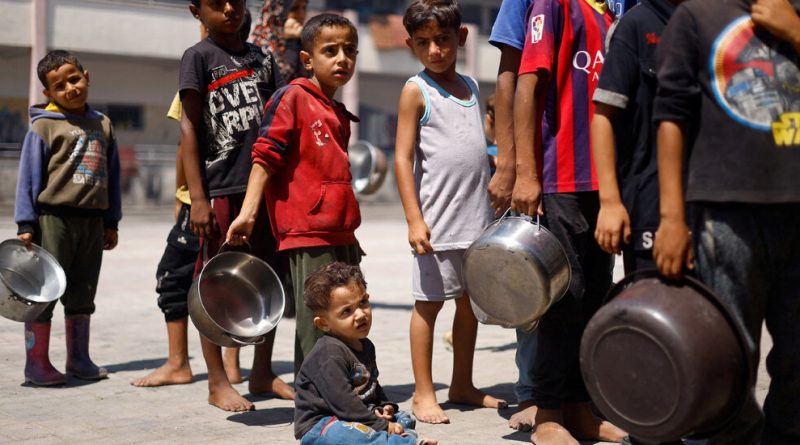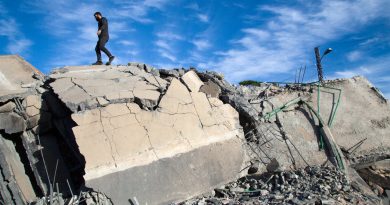Middle East Crisis: ‘Now There’s Barely Anything’: Gazans Describe Life on the Verge of Famine

A panel of global hunger experts warned this week that the Gaza Strip was on the brink of famine, but to many Gazans, it feels as if it is already here.
“I swear our stomachs are decaying,” said Eman Abu Jaljum, 23, whose family in northern Gaza has been surviving off canned peas and beans.
In a report issued on Tuesday, the experts said that almost half a million people in the territory faced starvation. They stopped short of declaring a famine, a designation that depends on a variety of criteria being met.
But in a Gaza devastated by almost nine months of war between Israel and Hamas, that can seem like a distinction without a difference.
“We are living in a famine that is more extreme than ever before,” Ms. Abu Jaljum said.
Each day brings a new struggle to find food. Fresh vegetables are scarce and meat scarcer still. And at those food markets that are still functioning, the shortages have sent prices skyrocketing, including for staples like flour and rice.
The last time that Iyad al-Sapti, a 30-year-old father of six in Gaza City, was able to get a bag of flour was nearly two months ago — and that required waiting in line for three hours, he said. A single bell pepper, he said, now costs more than $2.
“Who could possibly afford that?” he asked.
One of his daughters, Mr. al-Sapti said, asked for eggs, but there were none to be found. “I would just tell her, ‘I swear, I wish I can provide you with eggs,’” he said.
While warning of a high risk of famine, the report on Tuesday from the Integrated Food Security Phase Classification, which is known as the I.P.C., noted that the amount of food reaching northern Gaza had increased in recent months. The change coincides with the Israeli reopening of border crossings — under intense international pressure — to allow more aid to enter.
An I.P.C. designation of famine depends on a combination of factors, among them the percentages of households facing extreme lack of food, children suffering from acute malnutrition and deaths from starvation or malnutrition.
But many people may die before all the criteria are met.
Since the I.P.C. standards were developed in 2004, they have been used to identify only two famines: in Somalia in 2011, and in South Sudan in 2017. In Somalia, more than 100,000 people died before famine was officially declared.
As of Sunday, the health authorities in Gaza reported, 34 people had died from malnutrition, the majority children.
“Before some simple things were available,” Ms. Abu Jaljum said, “but now there’s barely anything.”
Although the fighting in Gaza is now largely concentrated in the south, food shortages have been reported across the enclave.
In Khan Younis, the southern Gaza city where Nizar Hammad, 30, has been sheltering with his family in a tent, finding food can be less a challenge than cooking it.
“The biggest suffering is preparing the food itself, because you do not have cooking gas,” he said.
Firewood is hard to find, and expensive. But Mr. Hammad said that bread, flour, pasta, rice and lentils were available and relatively affordable in his area, and that he could buy two bags of flour for about $2.60. Chicken, beef, fruit and vegetables were another matter.
“The problem now is the lack of cash, work and income,” Mr. Hammad said.
In the north, bread has become more available as some bakeries in Gaza City reopen their doors, said Mr. al-Sapti. His family has mostly been eating bread with the herb mix za’atar. “The bakeries reopening have helped us a lot,” he said.
But Mr. al-Sapti worries that the bakeries may soon run out of fuel.
“I really hope they stay open,” he said.
Source – NY Times




